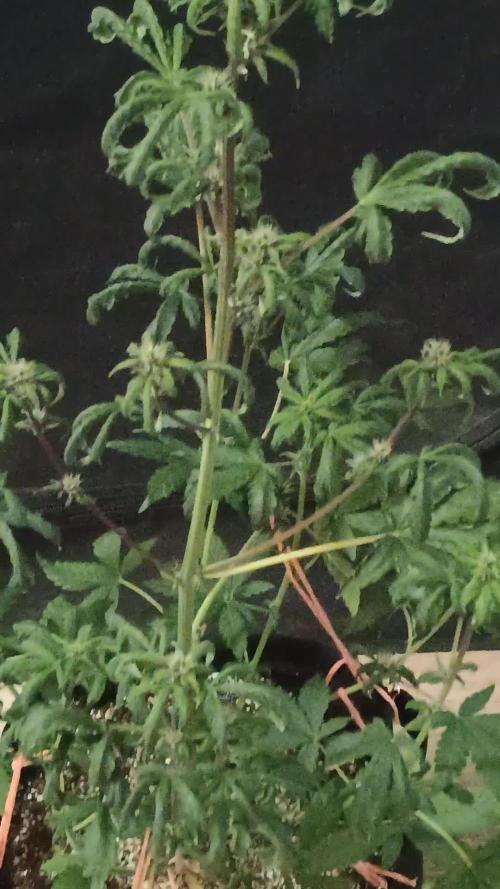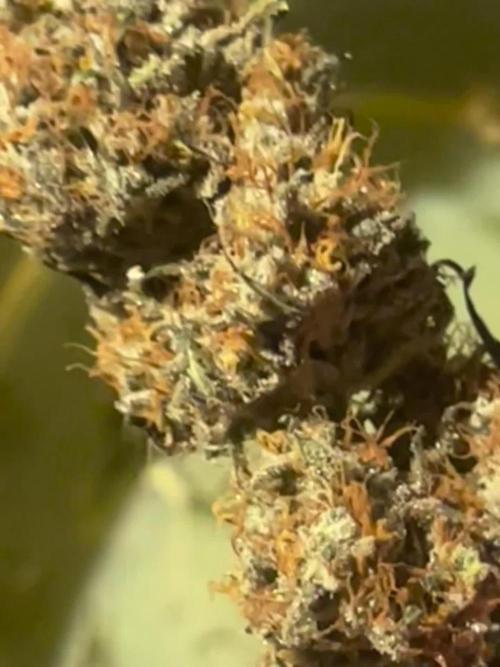The Grow Awards 2026 🏆 



























Likes
Comments
Share


@420DeepGrow
Follow
Gracias al equipo de Royal Queen Seeds y MarshHydro, sin ellos no sería posible esta hazaña
💐 🍁 Wedding Cake! Este potente híbrido de dominancia índica ofrece un perfil de terpenos difícil de encontrar. Disfruta de intensas notas azucaradas acompañadas de impresionantes niveles de THC. Procura tener la agenda libre el resto del día para disfrutar al máximo de las propiedades eufóricas y del colocón de esta encantadora dama.
Tierra. Hierbas. Dulzura. Cada calada de estos cogollos te hará querer más y más. La Wedding Cake sabe muy rica en porros y bongs, pero en vaporizador te harás una idea real de lo que pueden llegar a ofrecer. A medida que el sabor acaricia la lengua, su 23% de THC se asienta rápidamente, ejerciendo un potente subidón que relaja el cuerpo y anima la mente.
🌻 🚀 Consigue aquí tus semillas:
CODIGO 20% DESCUENTO: GROWERS20
https://www.royalqueenseeds.es/semillas-feminizadas-de-marihuana/628-wedding-cake.html
💡 Mars Hydro TS 3000, como la lámpara de cultivo LED más grande de la serie TS, ofrece suficiente cobertura para un área de 4 × 4 pies con un precio asequible y rendimientos de calidad; a cambio, se puede aplicar tanto al cultivo doméstico como al cultivo comercial.
Potencia - 450w
Cobertura Vegetal – 5×5 pies
Cobertura de flores - 4 × 4 pies
La opción abrumadora para la mayoría de los productores que la aplican en tiendas de campaña.
Consigue aqui tu lámpara:
https://marshydro.eu/products/mars-hydro-ts-3000-led-grow-light/
📆 Semana 9:
Finalizando este diario, esto va que vuela 😍, la resina esta cada vez mas presente ❄️ comienzan a madurar
Esta semana estará el TS-3000 de MarshHydro al 80% y 30cm de distancia.
Se estan desarrollando mejor que nunca, con una floracion mucho mas rapida y fromdosa, noto una gran mejoria gracias al Marshydro TS-3000.
Continuo con defoliaciones
A partir de ahora solo agua
Processing
Likes
1
Share


@aussiepom
Follow
Even after super cropping and training this cheese strain is rapid in veg growth , there is still another 5 weeks of veg growth to go so these are gunna be big girls
Likes
12
Share


@GizaWRZ
Follow
Lets say how many i get from each plant:
Amnesia 241 g
Six shooter 143
2x Blue Dream 271 g
Not that bad for Autos ✌️
Thanks everyone for watching this diary,
I wanna invite you to have a look next diary with White Widow :) Peace ✌️
Likes
29
Share


@Targona
Follow
29 days since my seed sprouted a little girl🌱
Fourth week of growing my Purplematic CBD Auto ⚕️💚💜
Nutrients:
Nutrients - transition to flower:
Plagron Alga Bloom is an organic flower fertilizer for growing in soil. The fertilizer is algae-based and contains amino acids, proteins and a balanced ratio of phosphorus and potassium 🌺
------------------------------------------------------------------------------------
Plagron Green Sensation is a flower booster. Green Sensation is a 4-in-1 product, so you don't need to add additional fertilizers. Suitable for all types of substrates and systems 💚💜💚
------------------------------------------------------------------------------------------------------------------
Bud Candy is a carbohydrate supplement from Advanced Nutrients that maximizes the growth and aroma of flowers. It supports strong root activity by providing food for beneficial microorganisms.
------------------------------------------------------------------------------------------------------------------
BioBizz Calmag is a 100% organic, but also vegan fertilizer with BIO certification. Biobizz Calmag was designed for professional growers and home growers who need an extra dose of calcium and magnesium. It contains added humic acid 💩☘️- I only apply it once a week.---------------------------------------------
Biobizz Bio pH-/ Biobizz Bio pH+ is a 100% natural and vegan pH regulator. Suitable for all types of substrates and crops. For use in growth and flowering. 💩🍋🌱
----------------------------------------------------
PRO-MIX CONNECT MYCORRHIZAL POWDER - for substrate
General:
Purplematic CBD Auto ⚕️💚💜
The girl is already in full bloom 🌺🏵️, I feel very sorry for this girl, her leaves are curling more and more. It looks almost horrible. On the other hand, I was afraid that her disease would also affect the flowers, but fortunately that did not happen. The buds are dark purple, the pompoms full of hairs are getting bigger. I think the harvest will be quite satisfactory, considering the problems with the leaves ☘️🌱
I use the new pH and EC meter Aqua Master Tools P110 PRO, the measurement is fast and accurate 👌 So far I have managed to keep the pH and EC as they should be. Although my EC has jumped a little more now, I diluted the watering so that the EC drops. I use Biobizz Bio +/- to correct it. The excellent mycorrhizal powder PRO-MIX Connect to support the roots certainly works very well. All the girls have been very strong and stable from an early age 💚🌿🌲
Training:
I did 2x defoliation and 2x LST to all the plants in the tent this week. It didn't work out very well with Purplematic, the basic LST was enough and I cut the leaves and they fell off, they don't have many and they are sick, however the plant needs them for photosynthesis 🍃
Likes
21
Share


@JuicyFruit
Follow
End of week 5 - Night 41
Added a couple videos, one from the side of the buds and one from the back (LST)
things are going well for this plant now, it may only be 15-18cm but its flowering stronger than my other plants. the smell is just getting more pure and strong every day :) and its getting frostier too :D so excited!
I have to grab myself a magnifying glass of sorts on monday to try and estimate when harvest will be :o
Likes
22
Share


@NanoLeaf
Follow
End of Week 6
Added CO2 with regulator and controller!
Added the trellis net to spread out the canopy and get more even light to bud sites.
The ladies have lost some momentum and they're drinking less because of the pest issue. Although they should be growing faster because of the CO2 supplementation I'm sure when the thrips are gone they will explode.
I also performed some HST by removing fan leaves and softly pinching and bending some of the stems to open up the canopy whilst keeping the stress at a minimal.
Pest Report:
Still fighting the thrips...
Every time I spray Bio-Insek and Xterminator (Agro-Organics) it deals with the problem for a few days until the eggs and larvae that the thrips left behind hatch and start munching on the plants again. The ladies are strong and healthy and get a slight wilt when I haven't sprayed IPM for a few days this tells me that its not a major issue but I need to get rid of them especially because I want to flip to flower soon.
It seems that the problem is under control. Now I will apply it weekly to make sure those buggers are ELIMINATED.
Likes
37
Share


@XperencdGmanXG
Follow
week 4 and she is filling out nicely. bud growth is on par with a synthetic grow. Smell is wonderful! There is something in the organic soil that makes the weed smell divine. I'll never go back to synthetic nutrients. 4 weeks to go can't wait.
Likes
13
Share


@710_Squish
Follow
There should be some really nice growth this week. This week will set the foundation before the stretch. I plan to let this one go for about a month before I start any lst.
Likes
2
Share


@TowersD
Follow
In the beggining of week 4 of flower the phenos are showing differences.
Nanaz x BBC are way toller that the Headbands.
Also, Nanaz x BBC #2 has no pistils but it is a female plant. I have that happened before when I grew the Banana Butter Cups S1
Likes
48
Share


@710_Squish
Follow
Harvest has went well. I will be hanging in a temt with a controlled environment at 50-55% rh to dry for 5-7 days. I hung the entire plant and didn't do any wet trimming. The cure went well, she maintained that sweet berry haze aroma. I would definitely recommend this high yielding strain.
Likes
14
Share


@Grandillustrator
Follow
Happier with how they look this week the smaller of the two closer in size now still a little bit behind overall no other issues
Likes
102
Share


@GirlGoneWeed
Follow
Not much to report, Week 10 and I was expecting the buds to get fat by now, but instead they are skinny, this plant in general is nice and healthy. This is the last week she will be drinking Nutes, week 11 and 12 will be flushing with plain water PH adjusted.
There are a bunch of small buds all over so I am curious to see what will this harvest weight. Lower leaves and top main cola leaves turning yellow due to lack of Nitrogen on late flower stage Nutes mixture.
Any advice or tips are welcomed!
Thanks for all the help folks, Stay lit!
Likes
8
Share

@lateKdF
Follow
10/12/21 - phenomenal auto grow. Lvl canopy (mic drop). Was initialy disappointed with cure samples, but she is turning into a pleasant final cure. Est. 15%, nice and predictable
Likes
23
Share


@Swanberg
Follow
Everything must go!!! Day 66 can’t imagine the cheese, the gift, and straw to last much longer. Trellis was removed and you can really tell how heavy some colas are damn near uproots some of plants without the support. I needed to save my trellis ;). Anyways Skittlez in dark period ready to be chopped, tropical fuel is on day 3 of drying and looks to be retaining that “fuel” smell ( no woody buds here!) made some awesome canna butter from the trim of white widow. Happy growing!

































